Chapter 15: Galaxies
Chapter 1
How Science Works
- The Scientific Method
- Evidence
- Measurements
- Units and the Metric System
- Measurement Errors
- Estimation
- Dimensions
- Mass, Length, and Time
- Observations and Uncertainty
- Precision and Significant Figures
- Errors and Statistics
- Scientific Notation
- Ways of Representing Data
- Logic
- Mathematics
- Geometry
- Algebra
- Logarithms
- Testing a Hypothesis
- Case Study of Life on Mars
- Theories
- Systems of Knowledge
- The Culture of Science
- Computer Simulations
- Modern Scientific Research
- The Scope of Astronomy
- Astronomy as a Science
- A Scale Model of Space
- A Scale Model of Time
- Questions
Chapter 2
Early Astronomy
- The Night Sky
- Motions in the Sky
- Navigation
- Constellations and Seasons
- Cause of the Seasons
- The Magnitude System
- Angular Size and Linear Size
- Phases of the Moon
- Eclipses
- Auroras
- Dividing Time
- Solar and Lunar Calendars
- History of Astronomy
- Stonehenge
- Ancient Observatories
- Counting and Measurement
- Astrology
- Greek Astronomy
- Aristotle and Geocentric Cosmology
- Aristarchus and Heliocentric Cosmology
- The Dark Ages
- Arab Astronomy
- Indian Astronomy
- Chinese Astronomy
- Mayan Astronomy
- Questions
Chapter 3
The Copernican Revolution
- Ptolemy and the Geocentric Model
- The Renaissance
- Copernicus and the Heliocentric Model
- Tycho Brahe
- Johannes Kepler
- Elliptical Orbits
- Kepler's Laws
- Galileo Galilei
- The Trial of Galileo
- Isaac Newton
- Newton's Law of Gravity
- The Plurality of Worlds
- The Birth of Modern Science
- Layout of the Solar System
- Scale of the Solar System
- The Idea of Space Exploration
- Orbits
- History of Space Exploration
- Moon Landings
- International Space Station
- Manned versus Robotic Missions
- Commercial Space Flight
- Future of Space Exploration
- Living in Space
- Moon, Mars, and Beyond
- Societies in Space
- Questions
Chapter 4
Matter and Energy in the Universe
- Matter and Energy
- Rutherford and Atomic Structure
- Early Greek Physics
- Dalton and Atoms
- The Periodic Table
- Structure of the Atom
- Energy
- Heat and Temperature
- Potential and Kinetic Energy
- Conservation of Energy
- Velocity of Gas Particles
- States of Matter
- Thermodynamics
- Entropy
- Laws of Thermodynamics
- Heat Transfer
- Thermal Radiation
- Wien's Law
- Radiation from Planets and Stars
- Internal Heat in Planets and Stars
- Periodic Processes
- Random Processes
- Questions
Chapter 5
The Earth-Moon System
- Earth and Moon
- Early Estimates of Earth's Age
- How the Earth Cooled
- Ages Using Radioactivity
- Radioactive Half-Life
- Ages of the Earth and Moon
- Geological Activity
- Internal Structure of the Earth and Moon
- Basic Rock Types
- Layers of the Earth and Moon
- Origin of Water on Earth
- The Evolving Earth
- Plate Tectonics
- Volcanoes
- Geological Processes
- Impact Craters
- The Geological Timescale
- Mass Extinctions
- Evolution and the Cosmic Environment
- Earth's Atmosphere and Oceans
- Weather Circulation
- Environmental Change on Earth
- The Earth-Moon System
- Geological History of the Moon
- Tidal Forces
- Effects of Tidal Forces
- Historical Studies of the Moon
- Lunar Surface
- Ice on the Moon
- Origin of the Moon
- Humans on the Moon
- Questions
Chapter 6
The Terrestrial Planets
- Studying Other Planets
- The Planets
- The Terrestrial Planets
- Mercury
- Mercury's Orbit
- Mercury's Surface
- Venus
- Volcanism on Venus
- Venus and the Greenhouse Effect
- Tectonics on Venus
- Exploring Venus
- Mars in Myth and Legend
- Early Studies of Mars
- Mars Close-Up
- Modern Views of Mars
- Missions to Mars
- Geology of Mars
- Water on Mars
- Polar Caps of Mars
- Climate Change on Mars
- Terraforming Mars
- Life on Mars
- The Moons of Mars
- Martian Meteorites
- Comparative Planetology
- Incidence of Craters
- Counting Craters
- Counting Statistics
- Internal Heat and Geological Activity
- Magnetic Fields of the Terrestrial Planets
- Mountains and Rifts
- Radar Studies of Planetary Surfaces
- Laser Ranging and Altimetry
- Gravity and Atmospheres
- Normal Atmospheric Composition
- The Significance of Oxygen
- Questions
Chapter 7
The Giant Planets and Their Moons
- The Gas Giant Planets
- Atmospheres of the Gas Giant Planets
- Clouds and Weather on Gas Giant Planets
- Internal Structure of the Gas Giant Planets
- Thermal Radiation from Gas Giant Planets
- Life on Gas Giant Planets?
- Why Giant Planets are Giant
- Gas Laws
- Ring Systems of the Giant Planets
- Structure Within Ring Systems
- The Origin of Ring Particles
- The Roche Limit
- Resonance and Harmonics
- Tidal Forces in the Solar System
- Moons of Gas Giant Planets
- Geology of Large Moons
- The Voyager Missions
- Jupiter
- Jupiter's Galilean Moons
- Jupiter's Ganymede
- Jupiter's Europa
- Jupiter's Callisto
- Jupiter's Io
- Volcanoes on Io
- Saturn
- Cassini Mission to Saturn
- Saturn's Titan
- Saturn's Enceladus
- Discovery of Uranus and Neptune
- Uranus
- Uranus' Miranda
- Neptune
- Neptune's Triton
- Pluto
- The Discovery of Pluto
- Pluto as a Dwarf Planet
- Dwarf Planets
- Questions
Chapter 8
Interplanetary Bodies
- Interplanetary Bodies
- Comets
- Early Observations of Comets
- Structure of the Comet Nucleus
- Comet Chemistry
- Oort Cloud and Kuiper Belt
- Kuiper Belt
- Comet Orbits
- Life Story of Comets
- The Largest Kuiper Belt Objects
- Meteors and Meteor Showers
- Gravitational Perturbations
- Asteroids
- Surveys for Earth Crossing Asteroids
- Asteroid Shapes
- Composition of Asteroids
- Introduction to Meteorites
- Origin of Meteorites
- Types of Meteorites
- The Tunguska Event
- The Threat from Space
- Probability and Impacts
- Impact on Jupiter
- Interplanetary Opportunity
- Questions
Chapter 9
Planet Formation and Exoplanets
- Formation of the Solar System
- Early History of the Solar System
- Conservation of Angular Momentum
- Angular Momentum in a Collapsing Cloud
- Helmholtz Contraction
- Safronov and Planet Formation
- Collapse of the Solar Nebula
- Why the Solar System Collapsed
- From Planetesimals to Planets
- Accretion and Solar System Bodies
- Differentiation
- Planetary Magnetic Fields
- The Origin of Satellites
- Solar System Debris and Formation
- Gradual Evolution and a Few Catastrophies
- Chaos and Determinism
- Extrasolar Planets
- Discoveries of Exoplanets
- Doppler Detection of Exoplanets
- Transit Detection of Exoplanets
- The Kepler Mission
- Direct Detection of Exoplanets
- Properties of Exoplanets
- Implications of Exoplanet Surveys
- Future Detection of Exoplanets
- Questions
Chapter 10
Detecting Radiation from Space
- Observing the Universe
- Radiation and the Universe
- The Nature of Light
- The Electromagnetic Spectrum
- Properties of Waves
- Waves and Particles
- How Radiation Travels
- Properties of Electromagnetic Radiation
- The Doppler Effect
- Invisible Radiation
- Thermal Spectra
- The Quantum Theory
- The Uncertainty Principle
- Spectral Lines
- Emission Lines and Bands
- Absorption and Emission Spectra
- Kirchoff's Laws
- Astronomical Detection of Radiation
- The Telescope
- Optical Telescopes
- Optical Detectors
- Adaptive Optics
- Image Processing
- Digital Information
- Radio Telescopes
- Telescopes in Space
- Hubble Space Telescope
- Interferometry
- Collecting Area and Resolution
- Frontier Observatories
- Questions
Chapter 11
Our Sun: The Nearest Star
- The Sun
- The Nearest Star
- Properties of the Sun
- Kelvin and the Sun's Age
- The Sun's Composition
- Energy From Atomic Nuclei
- Mass-Energy Conversion
- Examples of Mass-Energy Conversion
- Energy From Nuclear Fission
- Energy From Nuclear Fusion
- Nuclear Reactions in the Sun
- The Sun's Interior
- Energy Flow in the Sun
- Collisions and Opacity
- Solar Neutrinos
- Solar Oscillations
- The Sun's Atmosphere
- Solar Chromosphere and Corona
- Sunspots
- The Solar Cycle
- The Solar Wind
- Effects of the Sun on the Earth
- Cosmic Energy Sources
- Questions
Chapter 12
Properties of Stars
- Stars
- Star Names
- Star Properties
- The Distance to Stars
- Apparent Brightness
- Absolute Brightness
- Measuring Star Distances
- Stellar Parallax
- Spectra of Stars
- Spectral Classification
- Temperature and Spectral Class
- Stellar Composition
- Stellar Motion
- Stellar Luminosity
- The Size of Stars
- Stefan-Boltzmann Law
- Stellar Mass
- Hydrostatic Equilibrium
- Stellar Classification
- The Hertzsprung-Russell Diagram
- Volume and Brightness Selected Samples
- Stars of Different Sizes
- Understanding the Main Sequence
- Stellar Structure
- Stellar Evolution
- Questions
Chapter 13
Star Birth and Death
- Star Birth and Death
- Understanding Star Birth and Death
- Cosmic Abundance of Elements
- Star Formation
- Molecular Clouds
- Young Stars
- T Tauri Stars
- Mass Limits for Stars
- Brown Dwarfs
- Young Star Clusters
- Cauldron of the Elements
- Main Sequence Stars
- Nuclear Reactions in Main Sequence Stars
- Main Sequence Lifetimes
- Evolved Stars
- Cycles of Star Life and Death
- The Creation of Heavy Elements
- Red Giants
- Horizontal Branch and Asymptotic Giant Branch Stars
- Variable Stars
- Magnetic Stars
- Stellar Mass Loss
- White Dwarfs
- Supernovae
- Seeing the Death of a Star
- Supernova 1987A
- Neutron Stars and Pulsars
- Special Theory of Relativity
- General Theory of Relativity
- Black Holes
- Properties of Black Holes
- Questions
Chapter 14
The Milky Way
- The Distribution of Stars in Space
- Stellar Companions
- Binary Star Systems
- Binary and Multiple Stars
- Mass Transfer in Binaries
- Binaries and Stellar Mass
- Nova and Supernova
- Exotic Binary Systems
- Gamma Ray Bursts
- How Multiple Stars Form
- Environments of Stars
- The Interstellar Medium
- Effects of Interstellar Material on Starlight
- Structure of the Interstellar Medium
- Dust Extinction and Reddening
- Groups of Stars
- Open Star Clusters
- Globular Star Clusters
- Distances to Groups of Stars
- Ages of Groups of Stars
- Layout of the Milky Way
- William Herschel
- Isotropy and Anisotropy
- Mapping the Milky Way
- Questions
Chapter 16
The Expanding Universe
- Galaxy Redshifts
- The Expanding Universe
- Cosmological Redshifts
- The Hubble Relation
- Relating Redshift and Distance
- Galaxy Distance Indicators
- Size and Age of the Universe
- The Hubble Constant
- Large Scale Structure
- Galaxy Clustering
- Clusters of Galaxies
- Overview of Large Scale Structure
- Dark Matter on the Largest Scales
- The Most Distant Galaxies
- Black Holes in Nearby Galaxies
- Active Galaxies
- Radio Galaxies
- The Discovery of Quasars
- Quasars
- Types of Gravitational Lensing
- Properties of Quasars
- The Quasar Power Source
- Quasars as Probes of the Universe
- Star Formation History of the Universe
- Expansion History of the Universe
- Questions
Chapter 17
Cosmology
- Cosmology
- Early Cosmologies
- Relativity and Cosmology
- The Big Bang Model
- The Cosmological Principle
- Universal Expansion
- Cosmic Nucleosynthesis
- Cosmic Microwave Background Radiation
- Discovery of the Microwave Background Radiation
- Measuring Space Curvature
- Cosmic Evolution
- Evolution of Structure
- Mean Cosmic Density
- Critical Density
- Dark Matter and Dark Energy
- Age of the Universe
- Precision Cosmology
- The Future of the Contents of the Universe
- Fate of the Universe
- Alternatives to the Big Bang Model
- Space-Time
- Particles and Radiation
- The Very Early Universe
- Mass and Energy in the Early Universe
- Matter and Antimatter
- The Forces of Nature
- Fine-Tuning in Cosmology
- The Anthropic Principle in Cosmology
- String Theory and Cosmology
- The Multiverse
- The Limits of Knowledge
- Questions
Chapter 18
Life On Earth
- Nature of Life
- Chemistry of Life
- Molecules of Life
- The Origin of Life on Earth
- Origin of Complex Molecules
- Miller-Urey Experiment
- Pre-RNA World
- RNA World
- From Molecules to Cells
- Metabolism
- Anaerobes
- Extremophiles
- Thermophiles
- Psychrophiles
- Xerophiles
- Halophiles
- Barophiles
- Acidophiles
- Alkaliphiles
- Radiation Resistant Biology
- Importance of Water for Life
- Hydrothermal Systems
- Silicon Versus Carbon
- DNA and Heredity
- Life as Digital Information
- Synthetic Biology
- Life in a Computer
- Natural Selection
- Tree Of Life
- Evolution and Intelligence
- Culture and Technology
- The Gaia Hypothesis
- Life and the Cosmic Environment
Chapter 19
Life in the Universe
- Life in the Universe
- Astrobiology
- Life Beyond Earth
- Sites for Life
- Complex Molecules in Space
- Life in the Solar System
- Lowell and Canals on Mars
- Implications of Life on Mars
- Extreme Environments in the Solar System
- Rare Earth Hypothesis
- Are We Alone?
- Unidentified Flying Objects or UFOs
- The Search for Extraterrestrial Intelligence
- The Drake Equation
- The History of SETI
- Recent SETI Projects
- Recognizing a Message
- The Best Way to Communicate
- The Fermi Question
- The Anthropic Principle
- Where Are They?
Distances to Galaxies

Speculation about the nature of galaxies began long before Edwin Hubble's observations with the giant 100-inch telescope at Mount Wilson Observatory. In the middle of the 18th century, the German philosopher Immanuel Kant and the German mathematician Johann Lambert each considered the possibility that certain fuzzy patches in the night sky might be enormous systems of stars remote from the Milky Way. Kant wrote, "If such a world of stars is beheld at such an immense distance from the eye of the spectator situated outside of it, then this world will appear under a small angle as a patch of space whose figure will be circular if its plane is presented directly to the eye, and elliptical if it is seen from the side or obliquely." In other words, Kant realized that a flattened system of stars like the Milky Way might appear to have different shapes depending on its orientation in space. He also realized that a galaxy seen from afar would subtend a small angle on the sky. Finally, he knew that the dimness of the starlight from a galaxy could be explained by the inverse square law of light traveling across a vast distance of space.

For over 150 years, astronomers struggled to understand the nature of the nebulae. Speculation was not the same as evidence. One hypothesis held that they were clouds or whirlpools of gas condensing to form stars. Spectroscopy provided some support for the local hypothesis. The London amateur astronomer William Huggins showed that the spectra of a number of planetary nebulae and unresolved nebulae like that in Orion were due to hot gas and not unresolved stars. The alternative and much more radical hypothesis held that the nebulae were distant systems of stars. Spectroscopy of the Andromeda nebula showed the features expected of a composite of stars, demonstrating that not all nebulae were purely gaseous. In addition, the nebulae were distributed all over the sky, showing no preference for the plane of the Milky Way. Nor did they appear to be centered on the center of the galaxy, like the globular clusters. Objects that are very far from Earth will appear isotropic (the same in every direction) in their distribution on the sky.
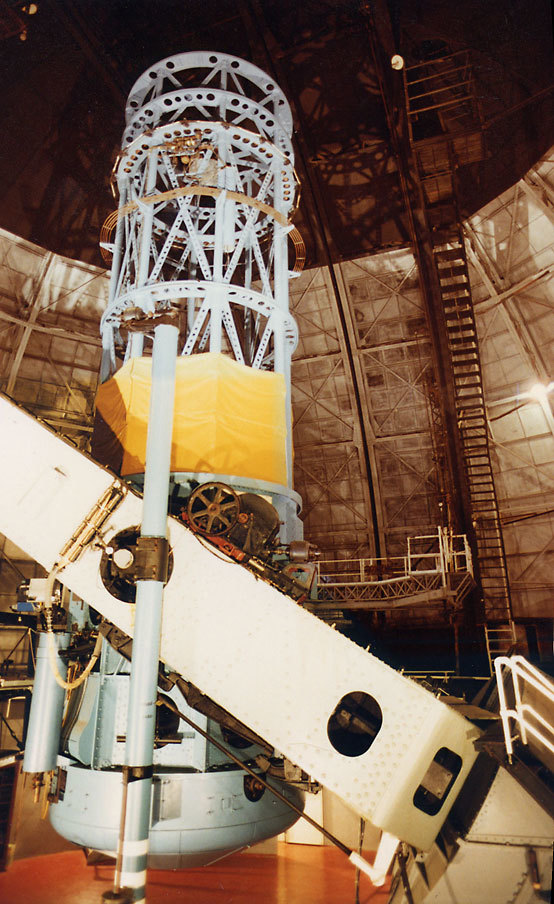

Part of the confusion about nebulae stemmed from the fact that the catalogs of nebulae created by Herschel and Messier did not consist of a single class of object. Messier's catalog contains a mixture of star-forming regions like the Orion Nebula (M 42), stellar remnants like the Crab Nebula (M 1), and galaxies like the Milky Way (M 31 and M 51, for example). Also, information on the nebulae was very limited. The technique of spectroscopy had not matured enough to apply to faint objects, so the nebulae were mostly fuzzy patches of light. Very few had spiral features or any particular structure.
Most astronomers were reluctant to subscribe to the "island universe" hypothesis — the idea of the nebulae as giant star systems remote from our own — for the simple reason that they could not conceive of a universe much larger than the Milky Way. This idea occurs repeatedly in the history of astronomy since Copernicus — each major discovery has placed us as minor players in a larger universe. The awareness of insignificance is not a comfortable feeling!
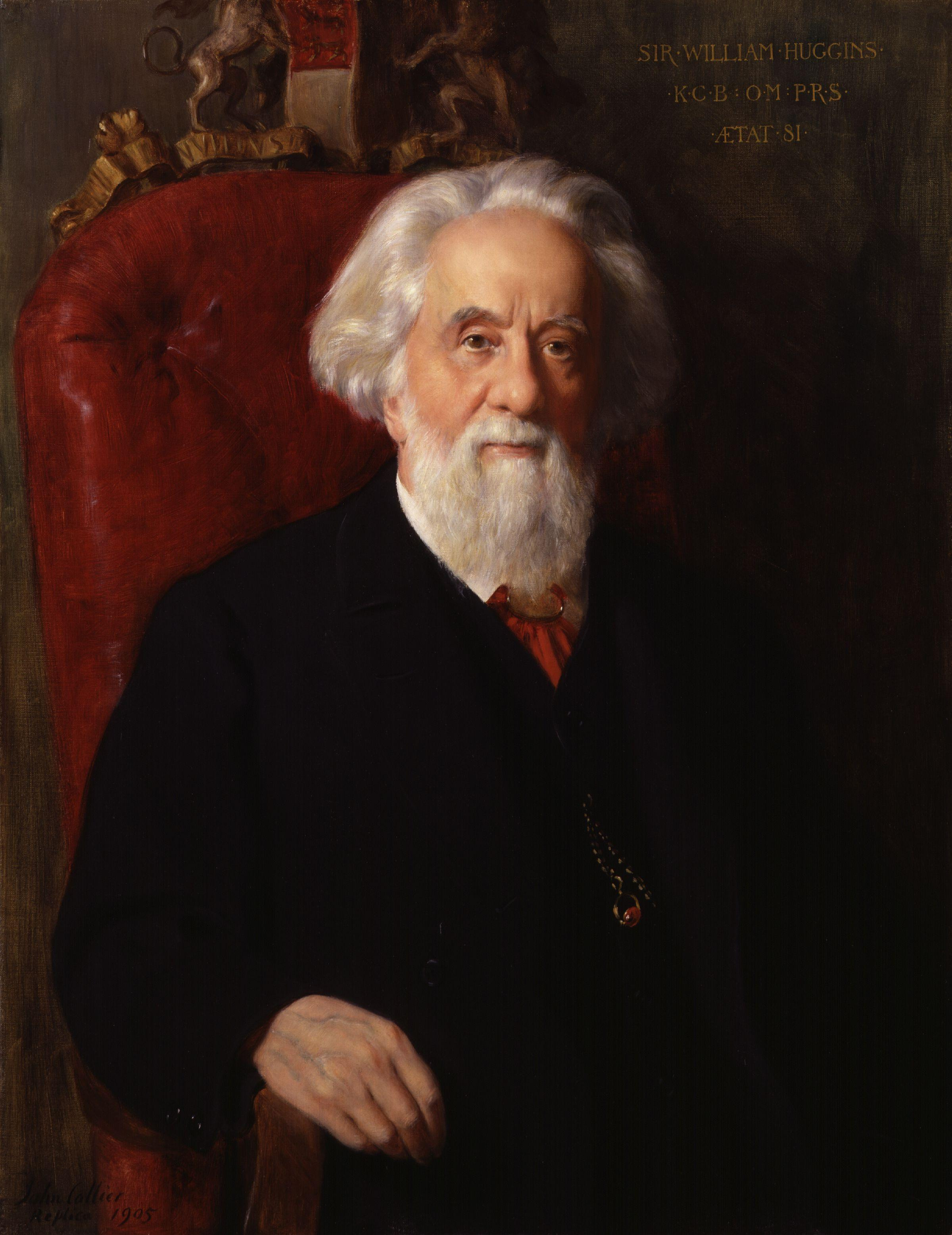
Resolving the controversy over nebulae required a new and reliable indicator of distance. Henrietta Leavitt's discovery of the relationship between luminosity and period in Cepheid variables provided the tool that was needed. Edwin Hubble finally measured the distance to a spiral nebula in 1924. Using the newly built 2.5-m (100-inch) reflector at the Mount Wilson Observatory, Hubble unambiguously resolved the Andromeda Nebula into myriad individual stars. His crucial observation was to identify and measure the periods of the Cepheids in Andromeda. Using the already known relation between period and luminosity, he concluded that the Andromeda nebula was a galaxy of stars about 300 kpc away, far beyond the periphery of the Milky Way. Since then, Hubble's estimate has been revised upwards by a factor of two, due to an error in the Cepheid distance calibration.
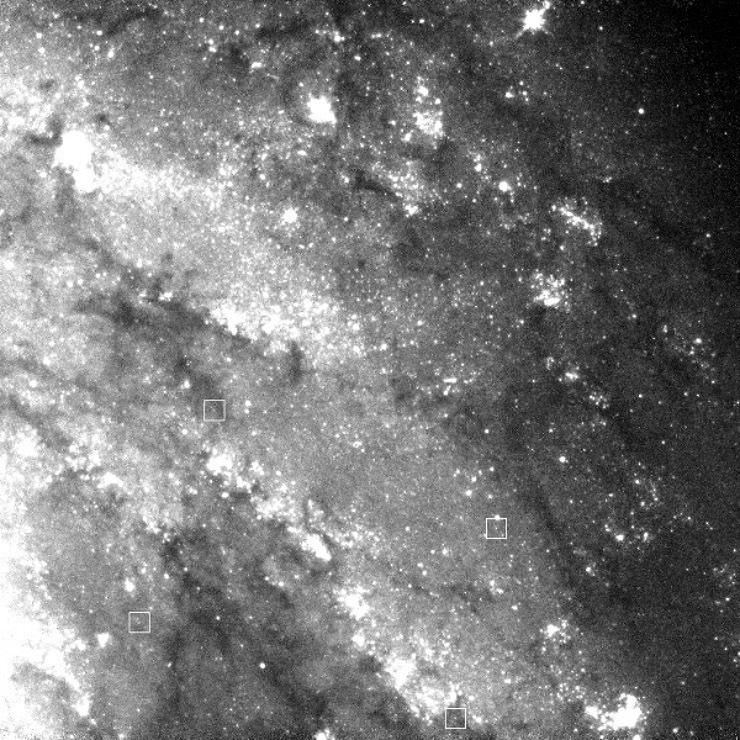
Astronomers use a chain of techniques is used to measure distances. Any property of a star or galaxy that can be used to estimate distance is called a distance indicator. Distances within the solar system are measured in the most direct way possible, by the timing of radar signals bounced off nearby planets. The distances to stars near the Sun are measured by their parallax. Very nearby stars can also show observable proper motions. Some of the stars with distances measured directly by geometry are in clusters, allowing the calibration of the technique of main sequence fitting on an H-R diagram. Then astronomers can plot H-R diagrams for other open clusters, and the amount by which the main sequence has to be shifted in brightness to overlay the cluster of known distance is a measure of the relative distance of the two clusters. This technique takes us to the edge of the Milky Way.
To calibrate distances to nearby galaxies, a more luminous distance indicator is needed than a star like the Sun. Populous clusters include RR Lyrae and Cepheid variable stars. The well-established relationship between the period of variability and the luminosity for these rare stars allows a distance to be calculated, given the apparent brightness. Cepheids, in particular, are up to 20,000 times more luminous than the Sun and so can be seen with large telescopes out to a distance of 10,000 to 20,000 kpc. Finally, it is possible to use supernovae, which can outshine the normal stars of an entire galaxy and can be seen out to distances of hundreds of thousands of kpc. Unfortunately, a supernova is such a fleeting stage of stellar evolution that one is observed only every 40 to 50 years in a galaxy. Therefore, there is no guarantee that we find one in a specific galaxy.

The distance scale is the set of measurements that define distances from the Solar System out to the most remote galaxies. Conceptually, the methods of the distance scale form a pyramid. Nearby methods are more direct and accurate. Moving farther from the Sun requires different techniques. Each technique depends on the reliability of those that work at smaller distances. A range of overlap in distance is required to calibrate each new method. Errors continue to accumulate and grow as we reach toward the galaxies.
Why must astronomers use so many different methods to measure all distances in the universe? Part of the reason is the sheer immensity of empty space. The type of distance indicator found near the Sun must also be found 10,000 times farther away to map out the Milky Way. By the inverse square law, this increase in distance corresponds to a dimming by a factor of 100 million. The type of distance indicator found across the Milky Way must also be discovered a thousand times farther away to be useful in measuring the distances to other galaxies, a dimming by a factor of 1 million. Nearby distance indicators lose their usefulness as the objects become too faint to observe. Distant ones are ineffective in the local universe because luminous stars are very rare. Cepheids can be seen in galaxies up to 20 million parsecs away, but the nearest one to the Sun is about 200 pc, too far for a reliable parallax measurement. Also, it is sheer bad luck that our galaxy has not hosted a supernova since 1604, since we expect a supernova about every 50 years.
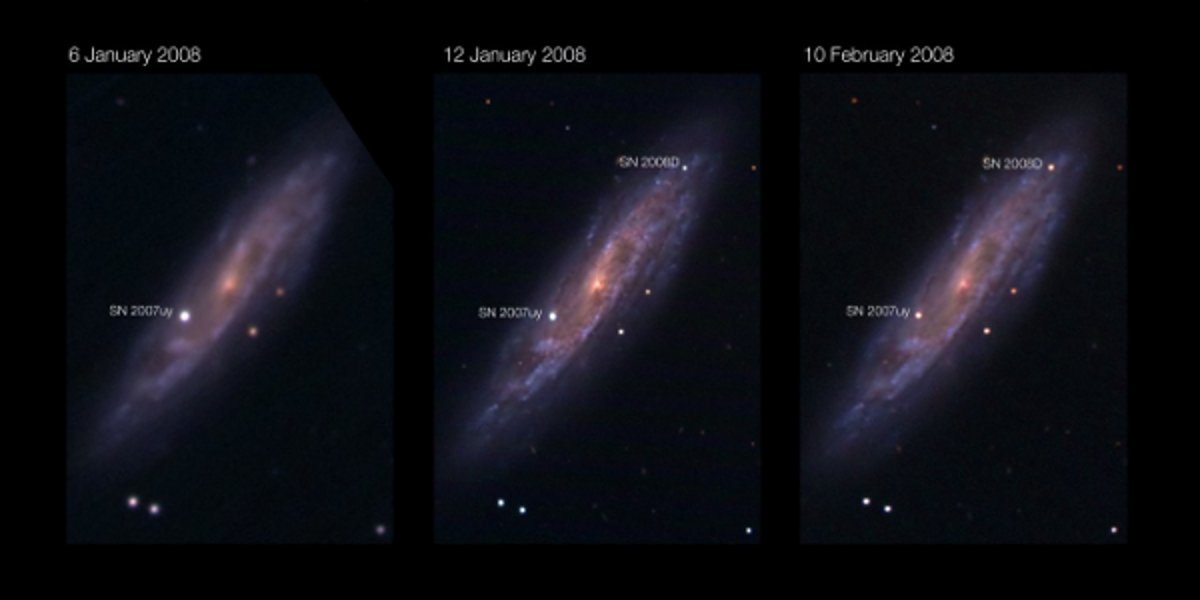
The measurement of distance is absolutely fundamental to astronomy. Without knowing an object's distance, astronomers cannot derive basic parameters such as size, mass, and luminosity. The goal of distance determination is to find objects whose intrinsic brightness or size is well-known — distance indicators. Knowing the absolute brightness (from the well-understood physics of the source) and the apparent brightness (measured through a telescope), distance can be easily calculated. It sounds simple, but the long journey to understand the nature of the nebulae shows that accurate distances are very hard to measure.
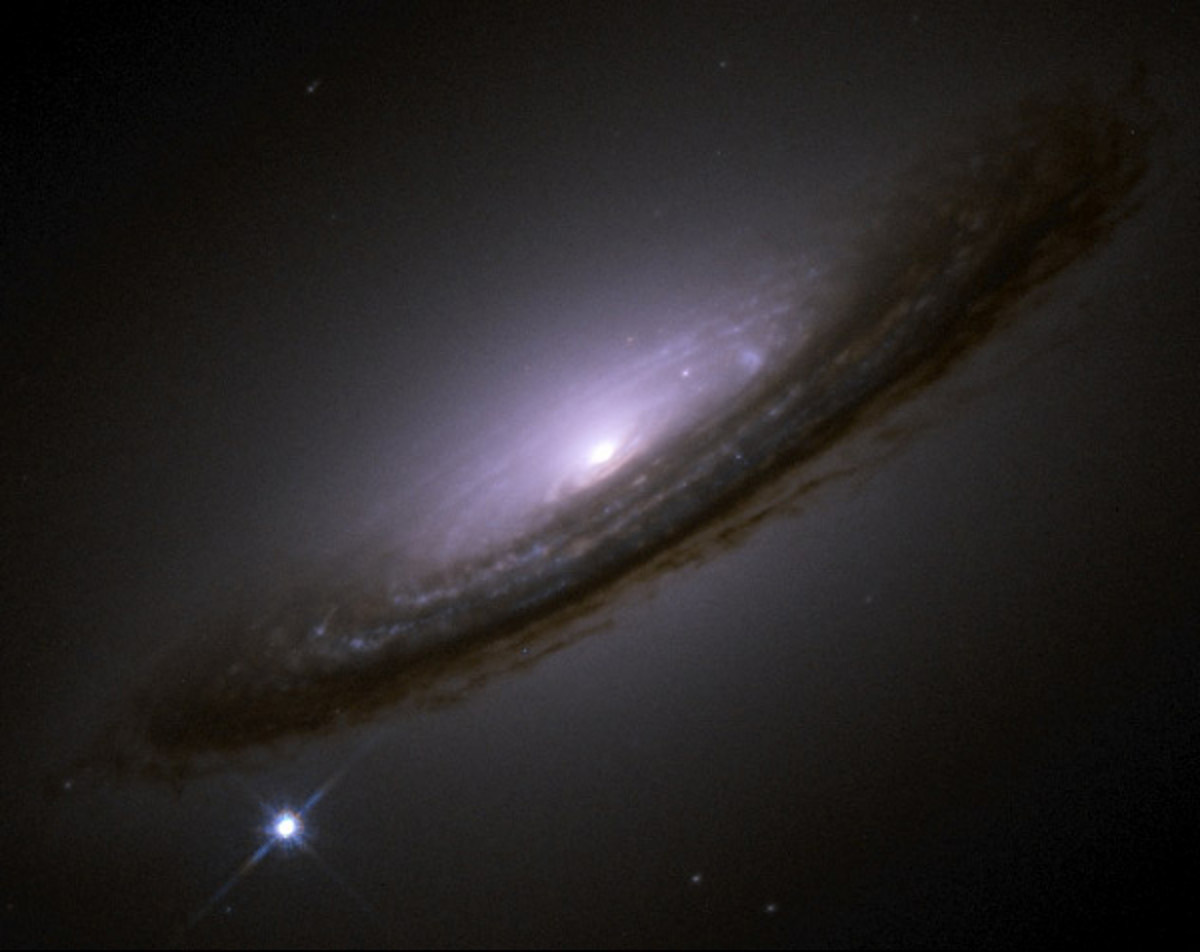
When astronomers measure distances, they must assume that the laws of physics are constant across the universe. The laws of physics are confirmed only in terrestrial laboratories, and to a more limited degree from our study of Moon rocks and particles in interstellar space. Beyond our galaxy, their application requires a powerful and unifying assumption. Hubble was relieved to find Cepheids and other familiar stars in distant galaxies because it indicated to him that "the principle of the uniformity of nature thus seems to rule undisturbed in this remote region of space."

